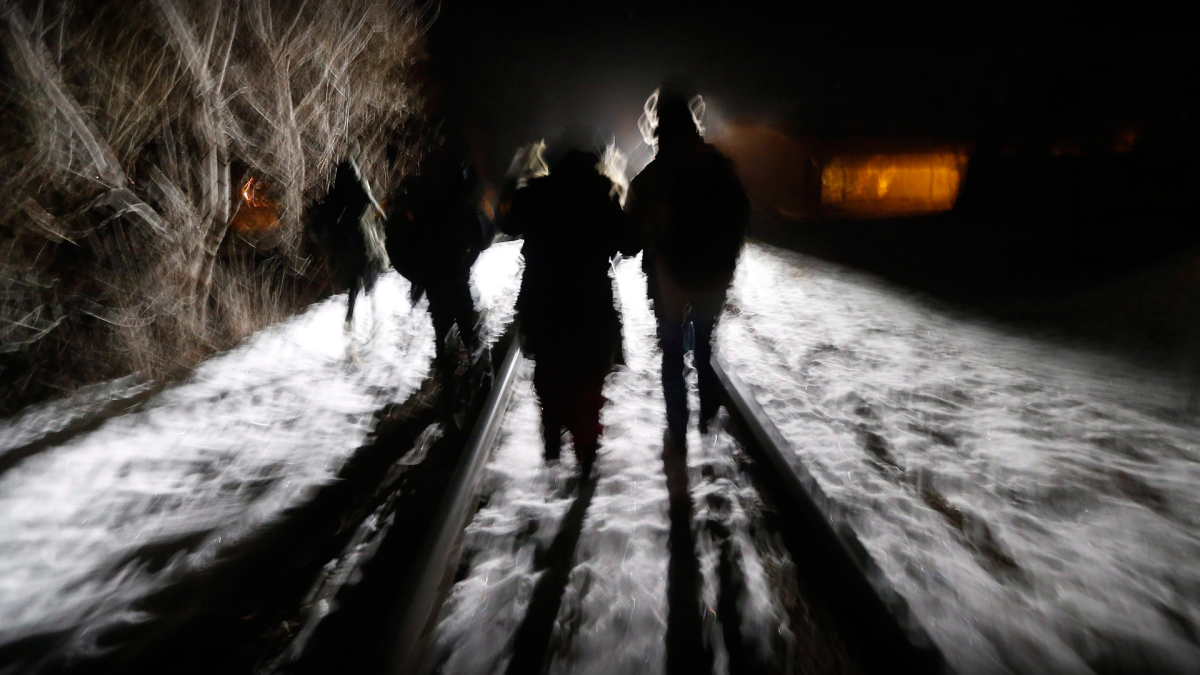What should Canada do about our Safe Third Country Agreement with the United States?

Part of the U.S.-Canada Smart Border Action Plan, the agreement states that refugee claimants must request protection in the first ‘safe’ country in which they arrive, unless they qualify for an exception (for family members, unaccompanied minors, certain document holders, and people who could face the death penalty in the U.S. or a third country).
Signed in 2002, the agreement became law in 2004 and applies to refugee claimants seeking entry to Canada from the United States at Canada-U.S. land border crossings, by train, or at airports if a claimant has been refused refugee status in the U.S. and is in transit through Canada after being deported.
This leaves a glaring hole — or rather a series of glaring holes, strung across the Canada-U.S. border. Refugee claimants who cross at unofficial crossings (such as farmers’ fields near the border towns of Emerson, Man., or Lacolle, Que.) cannot be turned back, as they are not subject to the agreement. Instead, they are arrested for illegal entry, and then turned over to Canadian Border Services. If they are not found to be a threat to Canada, most of them will then begin the process of applying for refugee status here.
RELATED: Are asylum seekers walking into Canada actually breaking the law?
- Life in the forest: How Stanley Park’s longest resident survived a changing landscape
- ‘Love at first sight’: Snow leopard at Toronto Zoo pregnant for 1st time
- Carbon rebate labelling in bank deposits fuelling confusion, minister says
- Buzz kill? Gen Z less interested in coffee than older Canadians, survey shows
This situation is not new, nor is it anything like the flood of migrants experienced by countries in Europe, where millions of people have been on the move. From the United States, about 2,000 people crossed illegally into Canada in 2016, compared to 7,000 through land points of entry.
But in the past year, the number of illegal migrants has been rising. Between April 2016 and January 2017, 430 asylum seekers crossed illegally near Emerson, compared to 340 who crossed in the entire 2015-2016 year. In Quebec, 1,280 refugee claimants entered “irregularly” between April 2016 and January 2017, triple the previous year’s total; in British Columbia and Yukon, 652 people did so, twice as many as the year before. Border Services has set up a trailer in Emerson and an emergency processing station in a basement in Lacolle to deal with the influx.
Why the uptick? While many refugees have said it’s because of the new hardline immigration policies of Donald Trump, which make them feel unsafe in the United States, the Canadian government has not confirmed that claim. Public Safety Minister Ralph Goodale recently stated that “the vast majority” of the refugee claimants were using the U.S. as a “transit point,” having never planned to actually stay there. Asked why, he simply responded: “That’s a very good question.”
Maybe the answer has less to do with Trump — and more to do with Prime Minister Justin Trudeau. The number of illegal migrants started rising after Trudeau took office. His call to bring in 25,000 Syrian refugees, his promise to lift Mexican visa requirements and his rapid rollback of Conservative immigration requirements on language and skills sent a signal that Canada was not only more ‘welcoming’ but probably an easier place to get into than before.
Coupled with Trump’s election, this created the perfect storm. For example, the number of Mexican asylum seekers has risen 700 per cent in January 2017 over January 2016, and 2,500 per cent from February 2016 to the same month this year.
In fact, two government officials confirmed to The Canadian Press that the surge in refugee claimants predated Trump’s election. They said that many claimants coming to Quebec held American visas issued at the U.S. embassy in Riyadh, Saudi Arabia — visas obtained to use the U.S. as a transit point to get to Canada and claim asylum. The officials said that these plans were set in motion long before the U.S. election in November.
There are two schools of thought on what to do about this phenomenon. Refugee advocates, NDP politicians and the B.C. Civil Liberties Association have all called for the suspension of the Safe Third Country Agreement. They claim that it encourages illegal crossings, with potentially deadly consequences. Just last week, an Ivorian man who had been living in New York City for 10 years was found barely conscious in the woods near the Lacolle border crossing. Earlier this year, two Ghanian men — one of whom had been detained for a year in the U.S. and had been refused asylum there — lost fingers and toes to frostbite crossing the border illegally near Emerson in freezing conditions. Bashir Khan, an immigration lawyer representing the men, said that “if the Safe Third Country Agreement would be scrapped, then these people would not be risking their lives through the prairie open field … They’d be able to present themselves right at the border.”
For the same reason, other observers are calling for the agreement to remain — with the loophole closed. A raft of conservative politicians, including newly-minted Alberta Progressive Conservative Leader Jason Kenney and Conservative leadership candidate Maxime Bernier, have called on the federal government to level the playing field between those who cross legally and illegally.
On immigration, the buck clearly stops with the federal government — and it should not equivocate. At a time when Canada is looking down the barrel of renegotiating NAFTA, competing with potentially lower U.S. tax rates and a new lease on life for the Keystone XL pipeline, declaring the United States an “unsafe country” probably would not be in our national interest.
Nor would it make sense: While the political climate in that country may be alarming for some groups, including Muslim Americans, that fear alone cannot justify illegal immigration to Canada. To date, the United States has not failed to meet the requirements for Safe Third Country Status, which include meeting “a high standard with respect to the protection of human rights.” Should it start doing so, that would be the occasion to review the deal.
Until then, the only fair thing to do is to close the loophole and put all refugees on an equal playing field, and discourage them from risking their lives in unsafe crossings. Canada must remain a compassionate country — but still a country of laws, and one that expects all who cross its borders to respect those laws.
Tasha Kheiriddin can be heard between noon and 2 p.m. ET on Toronto Talk Radio AM640. She’s also a columnist with Global News and iPolitics.ca, where this piece first appeared.








Comments